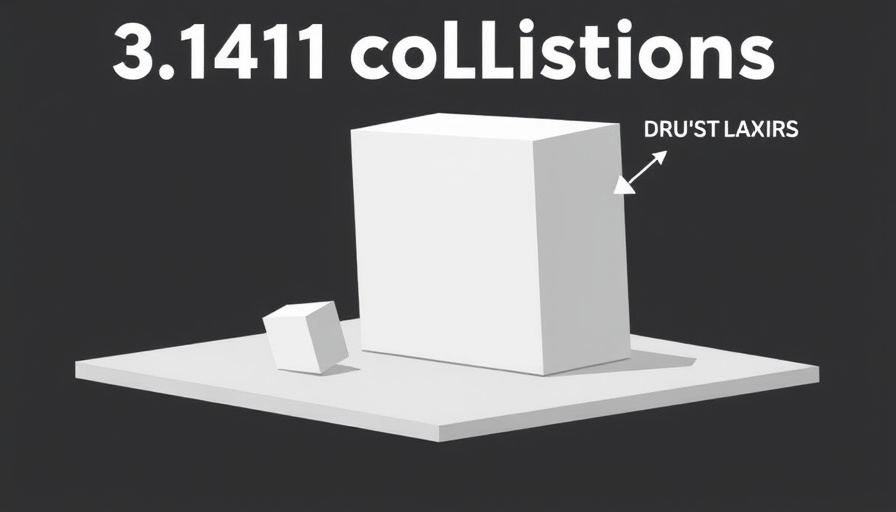
How Colliding Blocks Can Compute Pi: A Surprising Concept
In a captivating exploration of physics, a concept emerged in 2019 that pairs the classic puzzle of colliding blocks with the mathematical wonder of pi. With the resurgence of interest on Pi Day, it’s time to dig deeper into how these two seemingly unrelated topics intertwine. The original problem presents two blocks—one significantly smaller than the other—on a frictionless plane and asks how many times they will collide before reaching their final state. The fascinating twist? The total number of collisions, as the mass ratios increase, yields digits that resonate eerily with the digits of pi.
In 'There's more to those colliding blocks that compute pi', we dive into the fascinating relationships between classical physics puzzles and modern quantum computing, illuminating insights that inspire innovation.
The Basics Behind the Collision Puzzle
The initial setup might seem trivial: a small block and a much larger block collide. Mathematically, when you examine the ratio of their masses, surprising results emerge. For a mass ratio of 100:1, the total number of collisions is 31. But as the masses diverge, this number spans further, reaching upwards of 300 collisions for ratios of 10000:1, with the final count intriguingly resting at 314. These calculations highlight a hidden truth where classical physics derives connections to broader mathematical truths.
Reality Check: Idealized Assumptions
However, it’s crucial to note that these calculations hinge on idealized conditions—assuming perfectly elastic collisions leads to results devoid of real-world complexities, such as energy loss. Physicists call it a challenge to communicate the realistic sound and sight of collisions without muddying the elegant elegance of the mathematical exploration. Imagine instead a thrilling burst of blocks colliding, a visual storm of energy guided purely by mathematics. The goal here is to engage curiosity rather than strictly adhere to real-world physics.
Collisions and Quantum Computing: An Unexpected Link
While the relationship between mass ratios and collisions brings pi into the foreground, it’s equally fascinating to consider its connection to quantum computing, specifically Grover's Algorithm. The algorithm enhances search functions massively, reflecting how the classical setup of colliding blocks translates into a quantum perspective. This unexpected crossover exemplifies how understanding classical mechanics can pave the way for grasping advanced quantum concepts.
The Problem-Solving Lessons We Can Learn
This lossy model of physics offers a profound lesson on problem-solving. It encourages breaking down complex issues into digestible pieces. By employing principles such as the conservation of momentum and energy, students can truly appreciate how foundational physics principles manifest across different contexts, from blocks to quantum mechanics.
A Bridge to Innovation: Learning Through Play
In a world where creative problem-solving thrives, the blockage of knowledge can also be seen as an opportunity for innovation. Educators can utilize block collision experiments as engaging teaching tools, bridging gaps in understanding complex topics and sparking lasting interest in the mathematical sciences. Emphasizing the connections between various realms of knowledge not only enriches understanding but also fosters a culture of creative thinking.
Final Thoughts: Pursuing Curiosity
As we ponder the connections between two colliding blocks and the luminous number pi, we find ourselves invited into a world full of possibilities. By viewing challenges through a lens of curiosity, we can forge pathways to innovation in technology and quantum computing. So whether you’re a student or a curious mind inspired by this exploration, remember to stay engaged and continue embracing the transformative potential of knowledge across disciplines.
Don’t miss out on future insights into the beautiful intersection of physics and technology! Check out our upcoming features and podcasts that delve deeper into quantum computing and mathematical wonders that shape our world.
 Add Row
Add Row  Add
Add 




Write A Comment